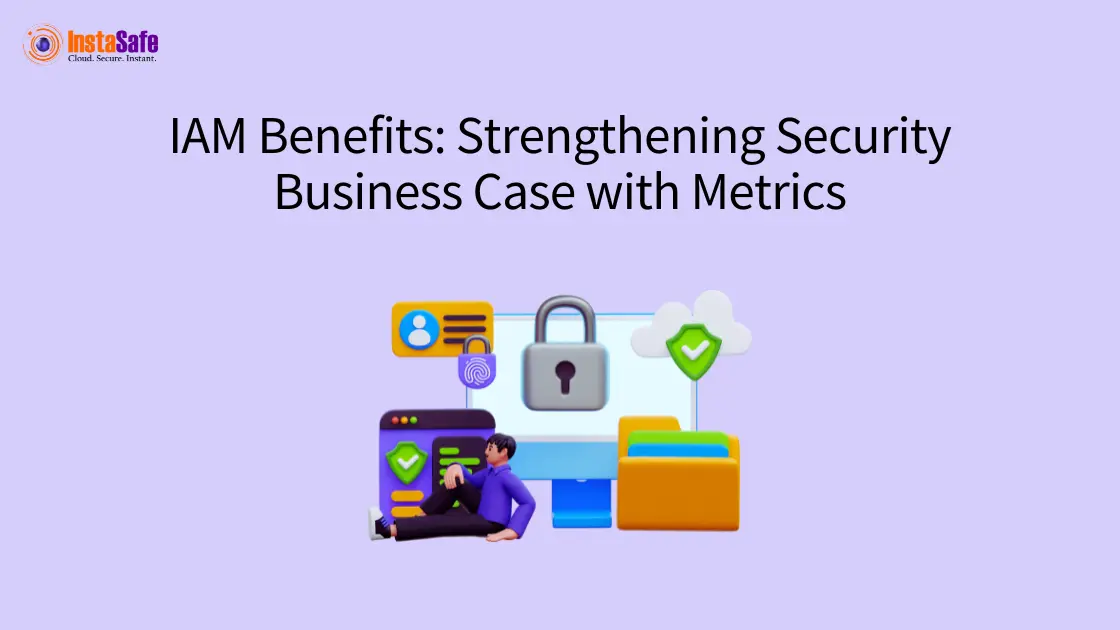IAM Benefits: Strengthening Security Business Case with Metrics

Identity and Access Management (IAM) solutions deliver substantial value beyond security. While the protective aspects of IAM are clear to security teams, business leaders need quantifiable evidence of its operational and financial benefits.
This article explores how to build a compelling business case for IAM implementation by demonstrating its measurable advantages across critical business functions and processes.
Top Benefits of IAM for Businesses
Strengthened Security Posture
Identity and Access Management significantly reduces unauthorised access risks. With proper controls, organisations can quickly detect and respond to suspicious activities, preventing data breaches before they occur. This includes comprehensive protection of sensitive information across all environments.
Improved Regulatory Compliance
Modern IAM solutions automatically document who accessed what and when. This audit trail satisfies requirements for GDPR, HIPAA, SOX and other regulations. These capabilities include simplified compliance reporting and reduced audit preparation time.
Enhanced User Experience
Benefits of IAM include eliminating password fatigue through Single Sign-On capabilities. Users can access many applications with one set of credentials, reducing frustration. This leads to faster access to resources, increasing productivity while maintaining strong security protocols.
Centralised Access Control
Identity and Access Management provides a single dashboard for managing all user permissions. IT teams gain complete visibility across cloud and on-premises environments. This ensures consistent policy enforcement and rapid permission adjustments across the entire organisation.
Reduced Insider Threat Risks
Advantages of Identity and Access Management include enforcing the principle of least privilege, which ensures user access only what they need. Automated monitoring detects unusual access patterns immediately. This prevents accidental or intentional data exposure by limiting excessive permissions.
Scalability and Adaptability
Solutions grow with your organisation, supporting thousands of users without performance degradation. Cloud-based implementations adapt to business changes quickly. This includes flexible deployment options and integration with emerging technologies.
Cost and Time Savings
Automation eliminates manual provisioning costs while reducing expensive security incidents. Self-service capabilities decrease IT workload significantly. This delivers measurable ROI through operational efficiency gains and prevents breaches across the organisation.
Integration with Modern Security Tools
IAM connects seamlessly with SIEM, threat intelligence and zero-trust frameworks. This integration enhances overall security effectiveness. The result is a unified security posture and coordinated threat response capabilities.
Use Cases and Business-Driven Metrics
Use Case 1: Streamlining Onboarding and Offboarding
Identity and access management provides critical efficiency gains in distributed infrastructure with dispersed users and decentralised SaaS applications. IAM solutions offer real-time syncing of roles to permissions, ensuring employees have access to all key applications from day one.
The benefits of IAM include eliminating manual provisioning delays and ensuring proper permission levels. For offboarding, Identity and Access Management solutions automatically close accounts and prevent orphaned resources. Value-led metrics track provisioning speed and offboarding completeness.
Use Case 2: Reducing IT Service Desk Tickets
Password resets represent a large portion of helpdesk inquiries, with each reset costing approximately tens of dollars. These expenses result in a significant loss of productivity per employee annually. Identity and Access Management directly addresses this challenge through self-service password reset capabilities.
Organisations implementing IAM track reductions in ticket volumes and faster resolution times. The benefits of IAM extend beyond cost savings to improve the IT team's reputation as users gain immediate access to resources. IAM solutions with Single Sign-On further reduce credential-related support needs.
Use Case 3: Reducing Resources Required for Provisioning and Access Requests
The principle of least privilege makes sure users only access necessary resources. However, manual implementation creates bottlenecks. Identity and Access Management automates these processes, reducing resource requirements. Key metrics include time to approve access requests and required escalations.
The benefits of IAM include enabling delegated administration where department heads manage permissions while IT maintains oversight. This approach frees technical resources from routine tasks. Identity and Access Management solutions provide complete visibility while distributing administrative responsibilities appropriately.
Use Case 4: Consolidating Vendors and Streamlining Application Usage
Large enterprises typically use between 40 and 200+ applications, creating significant costs for procurement and support. Identity and Access Management provides visibility into application usage patterns and consolidation opportunities.
The benefits of IAM include identifying unused subscriptions and overlapping functionalities, leading to substantial cost savings. Identity and Access Management solutions offer comprehensive dashboards showing license details and user activity across applications.
Organisations use these metrics for data-driven decisions about application rationalisation. The advantages of Identity and Access Management extend beyond security to optimised software spending and simplified compliance.
Why is Proving the Business Case for IAM Different?
Unlike other IT investments where benefits are immediately apparent, the advantages of Identity and Access Management often remain invisible until problems arise. Security initiatives like IAM typically prevent negative outcomes rather than create visible positive ones. This prevention-based value makes ROI calculations challenging.
Additionally, the benefits of IAM extend across departments and processes, making it difficult to attribute improvements to a single source. Business leaders may struggle to connect reduced operational friction directly to an Identity and Access Management implementation.
Furthermore, organisations often implement IAM solutions reactively after a security incident, limiting the opportunity for proper baseline measurements before deployment. This complicates before-and-after comparisons necessary for demonstrating value.
Therefore, identifying specific use cases with measurable metrics becomes essential for proving the comprehensive benefits of IAM to stakeholders.
Conclusion
Identity and Access Management delivers value far beyond traditional security boundaries. By implementing robust IAM solutions, organisations achieve operational efficiency and regulatory compliance, enhance user experiences, and strengthen security simultaneously.
The comprehensive benefits of IAM make it an essential investment for forward-thinking businesses prioritising both protection and productivity.
InstaSafe Identity and Access Management transforms how businesses handle identity. Our solution eliminates provisioning delays, slashes helpdesk costs, and strengthens your security posture—all while delivering seamless user experiences. Trust InstaSafe to transform how you manage access across your entire organisation.
Frequently Asked Questions (FAQs)
- How does IAM improve security?
IAM improves security by enforcing the principle of least privilege, preventing unauthorised access, automating user provisioning/deprovisioning, providing centralised control, detecting suspicious activities, reducing insider threats and creating comprehensive audit trails for all access events.
- What is the KPI in IAM?
Key Performance Indicators in Identity and Access Management include a reduction in help desk tickets, provisioning time, security incidents, audit preparation time, orphaned accounts, time-to-access for new employees, license utilisation rates and compliance violation rates. These metrics demonstrate the benefits of IAM beyond security.
- How do you establish baseline metrics before implementing an IAM solution?
Collect data on current provisioning times, help desk tickets, access request workflows and application usage patterns for 3-6 months before implementing Identity and Access Management solutions.
- How should organisations prioritise IAM implementation across different departments?
Begin with high-risk departments handling sensitive data or those with frequent employee turnover, then expand to areas with complex access requirements or compliance mandates. This strategic approach maximises the benefits of IAM and Identity and Access Management solutions.
